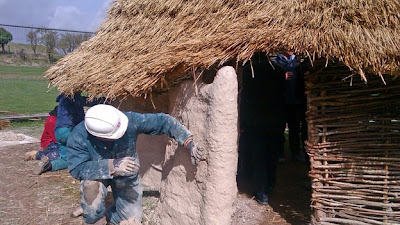Cecile Paresys stands next to the bones of two Gauls, on a site in Bucheres, near Troyes, on April 11, 2013 (AFP, Francois Nascimbeni)
BUCHERES, France — In a muddy field located between a motorway and a meander of the Seine southeast of Paris, French archaeologists have uncovered an Iron Age graveyard that they believe will shed light on the great yet enigmatic civilisation of Gaul.
The site, earmarked for a warehouse project on the outskirts of Troyes, is yielding a stunning array of finds, including five Celtic warriors, whose weapons and adornments attest to membership of a powerful but long-lost elite.
Archaeologist Emilie Millet is crouched at one of 14 burial sites that have been uncovered in recent weeks.
At her feet are the remains of a tall warrior, complete with a 70-centimetre (28-inch) iron sword still in its scabbard.
Read the rest of this article...










